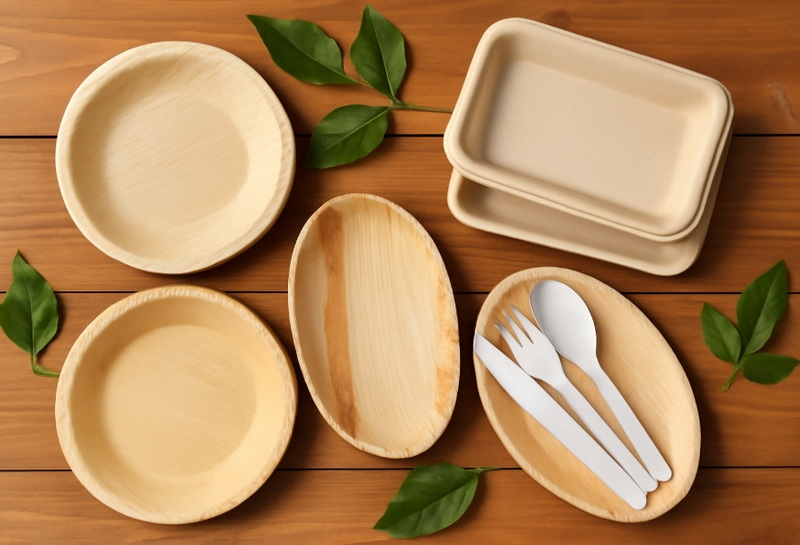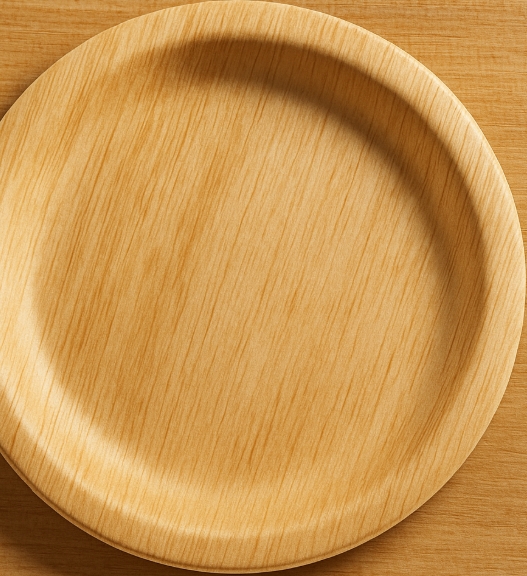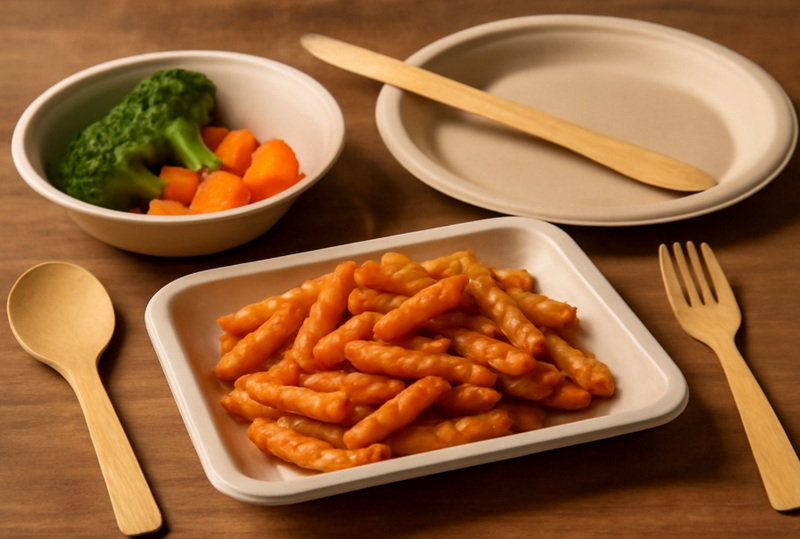
Content Menu
● Leading Disposable Plate Manufacturers And Suppliers in Korea
>> Mitapati Exports
>> YONGHO Industry Co., Ltd
>> OHBOTTLE CO LTD
>> rePAPER Inc.
>> Future Pack Co., Ltd.
● Innovations and Trends Among Disposable Plate Manufacturers And Suppliers
● Production Process of Disposable Plates
● Key Considerations When Choosing Disposable Plate Manufacturers And Suppliers
● The Role of OEM Services in the Disposable Plate Industry
● Market Opportunities and Challenges
● Collaboration Between Chinese and Korean Manufacturers
● Future Outlook for Disposable Plate Manufacturers And Suppliers in Korea
● Supporting the Circular Economy
● Conclusion
● Frequently Asked Questions (FAQs)
>> 1. What materials are commonly used by Disposable Plate Manufacturers And Suppliers in Korea?
>> 2. Are disposable plates from Korean manufacturers safe for hot and oily foods?
>> 3. Can I order custom-branded disposable plates from Korean suppliers?
>> 4. What certifications should I look for when sourcing disposable plates from Korea?
>> 5. How do Korean manufacturers ensure the sustainability of their disposable plates?
South Korea's disposable plate industry is characterized by a unique blend of traditional manufacturing expertise and modern environmental stewardship. Disposable Plate Manufacturers And Suppliers in Korea are recognized for their commitment to quality, safety, and sustainability. The market caters to a wide range of applications, including restaurants, catering services, food delivery, and large-scale events. The demand for disposable plates in Korea is driven by the country's fast-paced lifestyle, the popularity of takeout and delivery services, and a growing emphasis on reducing single-use plastic waste.
Korean manufacturers have embraced the use of eco-friendly materials such as natural pulp, bamboo, and water-soluble coatings. These materials are biodegradable and compostable, aligning with global trends toward sustainability. In addition, Korean Disposable Plate Manufacturers And Suppliers have obtained numerous international certifications, including FDA, DIN, UL, and BfR, which ensure that their products meet the highest standards for food safety and environmental responsibility.

Leading Disposable Plate Manufacturers And Suppliers in Korea
Below are some of the most prominent Disposable Plate Manufacturers And Suppliers operating in South Korea:
Mitapati Exports
Mitapati Exports is a leading manufacturer and exporter of disposable leaf plates in Korea. The company specializes in producing high-quality, eco-friendly plates designed for various applications, including agricultural businesses and large-scale events. Mitapati's products are made from natural materials, emphasizing sustainability and environmental stewardship. Their commitment to global quality standards and craftsmanship ensures that their plates are both durable and environmentally responsible.
YONGHO Industry Co., Ltd
YONGHO Industry is a premier manufacturer of paper plates and related disposable tableware. Their products are made from 100% natural pulp, ensuring they are safe for human consumption and environmentally friendly. YONGHO's plates are known for their sophisticated designs and compatibility with various printing options, making them ideal for parties, events, and exhibitions. The company's dedication to quality and hygiene is evident in every product they produce.
OHBOTTLE CO LTD
OHBOTTLE is a leading manufacturer of 100% biodegradable, water-soluble coating disposable plates, noodle bowls, and cups. Their products are made from natural pulp and are fully repulpable and compostable. OHBOTTLE's plates are microwave and air fryer safe, making them suitable for a wide range of food service applications. The company holds multiple international certifications, including FDA, DIN, and UL, and offers OEM services for custom branding.
rePAPER Inc.
rePAPER Inc. is a Korean manufacturer specializing in environmentally friendly food packaging, including disposable plates. Their products feature 100% repulpable coatings that are scientifically verified to be fast biodegradable. rePAPER's plates are microwavable, customizable, and comply with international food safety standards such as FDA and BfR. The company's commitment to sustainability is reflected in their patented eco-friendly coating technology and eco-label certifications.
Future Pack Co., Ltd.
While primarily known for its paper converting machinery, Future Pack Co., Ltd. plays a significant role in the disposable plate manufacturing ecosystem in Korea. The company supplies advanced machinery for producing paper plates and trays, supporting both domestic and international manufacturers. Their expertise in automation and quality control ensures high production efficiency and product consistency.
Innovations and Trends Among Disposable Plate Manufacturers And Suppliers
The Korean disposable plate industry is at the forefront of innovation, with manufacturers continuously developing new materials and production techniques. Key trends include:
- Sustainability: Korean Disposable Plate Manufacturers And Suppliers are increasingly using biodegradable and compostable materials such as natural pulp, bamboo, and water-soluble coatings. These materials minimize environmental impact and align with global sustainability goals.
- Customization: Many manufacturers offer OEM services, allowing brands to customize plate designs, sizes, and packaging according to their needs. This flexibility is highly valued by international clients seeking unique branding opportunities.
- Advanced Manufacturing: Automation and advanced machinery, such as those provided by Future Pack Co., Ltd., enable high-volume production with consistent quality and reduced waste.
- Certifications and Compliance: Korean manufacturers prioritize obtaining international certifications, ensuring their products meet the highest standards for food safety and environmental responsibility.
Production Process of Disposable Plates
Understanding the production process is essential for appreciating the quality and innovation behind Korean Disposable Plate Manufacturers And Suppliers. The typical process includes the following steps:
1. Raw Material Preparation: High-quality paper, pulp, or biodegradable materials are sourced and prepared for production. This stage involves selecting materials that meet strict environmental and safety standards.
2. Cutting and Shaping: Sheets of material are cut to size and shaped using automated machinery. Precision cutting ensures uniformity and minimizes material waste.
3. Molding and Pressing: The shaped sheets are pressed into plates using heat and pressure, ensuring durability and consistency. This step is critical for producing plates that can withstand hot and oily foods.
4. Coating and Finishing: Eco-friendly coatings are applied to enhance water and grease resistance without compromising biodegradability. These coatings are often made from plant-based or water-soluble materials.
5. Quality Control and Packaging: Finished plates are inspected for defects, sterilized if necessary, and packaged for shipment. Quality control measures ensure that only the best products reach the market.
Korean manufacturers invest heavily in research and development to improve each stage of the production process. This commitment to innovation results in higher quality products, reduced environmental impact, and greater efficiency.

Key Considerations When Choosing Disposable Plate Manufacturers And Suppliers
Selecting the right Disposable Plate Manufacturers And Suppliers requires careful evaluation of several factors:
- Material Quality: Opt for manufacturers using natural, biodegradable, or compostable materials to ensure environmental responsibility.
- Certifications: Look for products certified by FDA, DIN, UL, or other relevant authorities to guarantee food safety and compliance.
- Customization Options: Choose suppliers that offer OEM services for branding and design flexibility.
- Production Capacity: Ensure the manufacturer can meet your volume requirements with consistent quality.
- Sustainability Practices: Prioritize suppliers committed to reducing environmental impact through innovative materials and processes.
The Role of OEM Services in the Disposable Plate Industry
As a Chinese OEM manufacturer, we recognize the importance of collaboration with Disposable Plate Manufacturers And Suppliers in Korea. OEM partnerships enable brands to leverage advanced manufacturing capabilities, sustainable materials, and innovative designs to create unique products for their markets. These collaborations are essential for meeting the diverse needs of global clients and staying competitive in the fast-evolving disposable tableware industry.
OEM services allow international brands to customize their products according to specific requirements, such as size, shape, color, and branding. This level of customization is particularly valuable for companies looking to differentiate themselves in competitive markets. Korean manufacturers are well-equipped to handle large-scale orders and can provide technical support throughout the product development process.
Market Opportunities and Challenges
The disposable plate market in Korea presents significant opportunities for growth, driven by increasing demand for eco-friendly and convenient tableware solutions. However, there are also challenges that manufacturers and suppliers must navigate:
- Competition: The market is highly competitive, with many established players and new entrants vying for market share. Manufacturers must differentiate themselves through innovation, quality, and customer service.
- Regulatory Compliance: Strict food safety and environmental regulations require manufacturers to invest in certifications and quality control measures.
- Supply Chain Management: Ensuring a steady supply of raw materials and managing logistics are critical for maintaining production efficiency and meeting customer demands.
- Consumer Preferences: Changing consumer preferences, such as the growing demand for sustainable products, require manufacturers to continuously adapt their offerings.
Despite these challenges, the future looks bright for Korean Disposable Plate Manufacturers And Suppliers. The industry's commitment to innovation and sustainability positions it well for continued growth in both domestic and international markets.
Collaboration Between Chinese and Korean Manufacturers
Collaboration between Chinese and Korean manufacturers is becoming increasingly important in the global disposable tableware market. Chinese manufacturers, like us, bring strong production capabilities, cost efficiency, and extensive experience in OEM services. Korean manufacturers, on the other hand, offer advanced technology, innovative materials, and a strong reputation for quality and sustainability.
By working together, Chinese and Korean manufacturers can create synergies that benefit both parties. For example, joint ventures can combine the strengths of both countries to develop new products, expand into new markets, and improve supply chain efficiency. Such collaborations also enable manufacturers to respond more effectively to changing market trends and customer demands.
Future Outlook for Disposable Plate Manufacturers And Suppliers in Korea
Looking ahead, the disposable plate industry in Korea is expected to continue its upward trajectory. The growing emphasis on sustainability, combined with advances in manufacturing technology, will drive further innovation and market expansion. Key trends to watch include:
- Increased Use of Biodegradable Materials: Manufacturers will continue to explore new materials that offer improved performance and environmental benefits.
- Smart Packaging Solutions: Integration of smart packaging technologies, such as QR codes and NFC tags, will provide consumers with more information about product origin, safety, and sustainability.
- Expansion into New Markets: Korean manufacturers are well-positioned to expand into emerging markets in Asia, Europe, and North America, where demand for eco-friendly tableware is rising.
- Enhanced Customer Engagement: Manufacturers will focus on building stronger relationships with customers through personalized service, digital marketing, and innovative product offerings.
Supporting the Circular Economy
Korean Disposable Plate Manufacturers And Suppliers are playing a key role in supporting the circular economy by promoting the use of renewable resources, reducing waste, and encouraging recycling. Many manufacturers have implemented closed-loop systems where used plates are collected, processed, and reintroduced into the production cycle. This approach not only reduces environmental impact but also creates new business opportunities in waste management and resource recovery.
Conclusion
South Korea is home to some of the world's most innovative and responsible Disposable Plate Manufacturers And Suppliers. With a strong focus on sustainability, quality, and customization, these companies are well-positioned to meet the evolving needs of global markets. The industry's commitment to innovation and environmental stewardship ensures that Korean manufacturers remain at the forefront of the disposable tableware sector. As a trusted Chinese OEM partner, we value our collaborations with Korean manufacturers and look forward to continuing to deliver exceptional products to our clients worldwide.

Frequently Asked Questions (FAQs)
1. What materials are commonly used by Disposable Plate Manufacturers And Suppliers in Korea?
Korean manufacturers primarily use natural pulp, bamboo, and water-soluble coatings to produce eco-friendly disposable plates. These materials are biodegradable, compostable, and safe for food contact.
2. Are disposable plates from Korean manufacturers safe for hot and oily foods?
Yes, many Korean manufacturers produce plates with coatings that provide resistance to heat and grease, making them suitable for a wide range of foods.
3. Can I order custom-branded disposable plates from Korean suppliers?
Absolutely. Most leading Disposable Plate Manufacturers And Suppliers in Korea offer OEM services, allowing clients to customize designs, sizes, and packaging to match their brand identity.
4. What certifications should I look for when sourcing disposable plates from Korea?
Look for certifications such as FDA, DIN, UL, BfR, and eco-label certifications to ensure product safety and environmental compliance.
5. How do Korean manufacturers ensure the sustainability of their disposable plates?
Korean manufacturers prioritize the use of biodegradable and compostable materials, implement advanced production technologies to minimize waste, and adhere to strict environmental standards.

















